Interview with Daniele D'Antonio, Art photographer in Turin (Italy)
Anna Balzarini asked the questions. She is a geologist and an expert on water issues and the environment. In her work she has devoted much attention to the education of young people introducing them to the environmental problems of our planet. She recently ran into a fellow-geologist, who has always loved photography and has made this now his principal activity through which he can express his particular sensitivity. His photos have affected her, so she met him to better understand his art and the possible connections with scientific research. Seeing the affinity with Mundus maris concerns and objectives, Anna interviewed Daniele so we can understand not only how an art photographer works, but also that art is not just what you see in galleries for an educated elite, but that it can permeate every-day life. Art can be found in the world that surrounds us!
AB: Who are you and what do you do?
DDA: I am Daniele D'Antonio. Italian, living in Turin, near the Alps. I am married with two children. My current profession is art-photographer. I am expressing my art through photography and installations. I work either on my own or on the base of client’s requests. My interest is in social, ethical, existential issues, which I like to represent in my works.
AB: What’s your background?
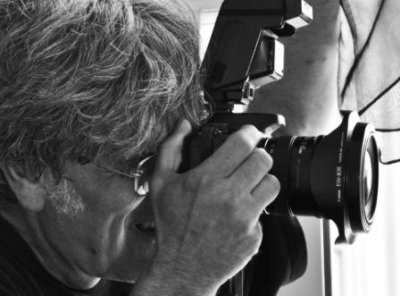 DDA: I am geologist; I’ve got my degree at Turin University, in 1983. I have worked as a geologist from then up to few years ago. But since secondary school I developed a passion for the arts, the love for literature and classical studies, which I consider core elements for forming one's personality.
DDA: I am geologist; I’ve got my degree at Turin University, in 1983. I have worked as a geologist from then up to few years ago. But since secondary school I developed a passion for the arts, the love for literature and classical studies, which I consider core elements for forming one's personality.
AB: What jobs have you done other than being an artist?
DDA: My initial professional career has been mostly oriented to technical-scientific activities linked to geology. In the last 20 years I have founded and managed three specialised companies, involved in the planning of infrastructure projects and the construction of public works. This is a world with people and economic interests distant from the arts and without the sensibilities to appreciate them, at least in Italy.
AB: What has been your seminal experience in Photography?
DDA: I can not say that there was a “moment Zero”; rather it was a progressive path where to express what I wanted through images does not always belonged to the perception of the real world as we used to see it. Gradually, refining the use of my photographic technique, I was able to express concepts and situations more completely.
AB: How do you work?
DDA: In general, my photographic projects are based on a suggestion, followed by a question: "is this a theme with more than one way of looking at it?" If the answer is Yes, the project takes shape. The image creation happens almost instinctively: at times I have the sensation that objects present themselves and ask to work with me to create the image. In these moments I try to be as receptive as possible to external stimuli and ideas, suggesting the role that they themselves want to play in the scene. This way the final image is born.
AB: What do you most enjoying doing?
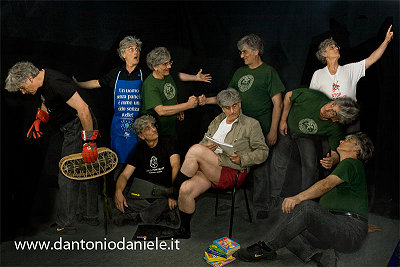 DDA: Freedom! I love the complete freedom to create situations, which illustrate concepts, including abstract ones, with an approach probably more similar to an art painting than to photography; or at least what we commonly call photography. The fascinating part is the possibility through photography to fix my interpretation and my ideas about what I am observing in a shot, whether the images are studies, a report, portraits, natural environments or determined by the presence of man.
DDA: Freedom! I love the complete freedom to create situations, which illustrate concepts, including abstract ones, with an approach probably more similar to an art painting than to photography; or at least what we commonly call photography. The fascinating part is the possibility through photography to fix my interpretation and my ideas about what I am observing in a shot, whether the images are studies, a report, portraits, natural environments or determined by the presence of man.
AB: What themes do you pursue?
DDA: My artistic production are mostly studio pictures, where the techniques are quite similar to art paintings. I try to represent philosophical, ethical and social concepts through objects that can be found among very common things, typical objects which are part of our daily life. I transform their ordinary use into role as scene actors. The metaphor and the paradox are fascinating because they can transmit a message directly to the sensibility of the people.
AB: Do you have a favorite art work?
DDA: No, I like many authors, from the great to the unknown, for particular elements of their artistic sensibility, which can often be very far apart. In visual communication, as in the case of photography, often the interpretations are many and the same messages can be conveyed through different types of images. For this reason I do not feel tied to specific art photographers, not even specific to photographers in general. I think the important thing remains the predisposition to accept the message.
AB: Can you describe a real-life situation that inspired you?
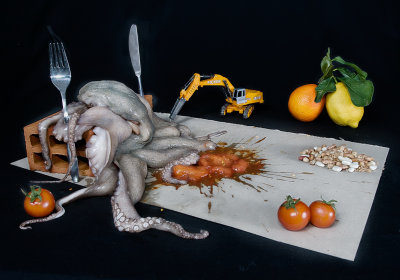 DDA: “Greenchronicles” is a recent photography project, based on the Italian news from winter 2009 to spring 2010. I was following day by day the news in newspapers and on television; that was the main source of inspiration, so I describe political and social events through the techniques of still-life, mixed with a personal events-interpretation. It has been the first project in which I officially affirmed the intention of object transposition inside of the image. Since that moment, it became my personal art-photography format.
DDA: “Greenchronicles” is a recent photography project, based on the Italian news from winter 2009 to spring 2010. I was following day by day the news in newspapers and on television; that was the main source of inspiration, so I describe political and social events through the techniques of still-life, mixed with a personal events-interpretation. It has been the first project in which I officially affirmed the intention of object transposition inside of the image. Since that moment, it became my personal art-photography format.
AB: What’s your most embarrassing moment?
DDA: I am sure, it's been the moment when I had to admit to myself that the profession of geologist, which I loved and had chosen, was just becoming lobbywork in the hand of outside interests, and that my work did not generate results warranting transmission to other people.
AB: Why art-photographer?
DDA: Probably because I still believe that if I had chosen another career, I would have been a painter from the beginning. Photography is an old passion, but only belatedly, I realised that through photography, perhaps unconsciously cultivated, I could express myself with the same approach as a painter and then found myself using it as my personal and natural means of expression.
AB: What food, drink, songs inspire you?
DDA: In my most recent works, using food, I like to utilise only Mediterranean products. This is intentional, also as a cultural reference, a reminder of a bit of my own roots and what I consider a basic component of my way of being. The Italian quality wine is at the top of the ranking for drinks, not necessarily inspiring, but a good help to refine the perception of physical conditions, when I am creating. I don’t have music or literature preferences. In literature I do not exclude genres: I use texts of different epochs and places to go with my images and I behave the same way with music. From opera to pop, from jazz and African and ethnic music from all over the world, music has the same ability to produce an image of the depth of the human soul. The pair music-images for me is one of the most powerful tools we have at our disposal to seek our inner selves.
AB: Is the artistic life lonely?
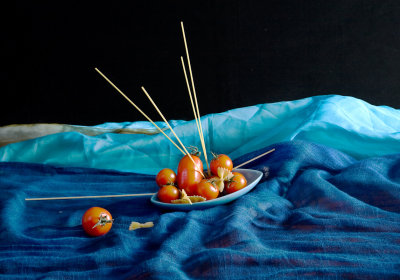 DDA: Absolutely not! An artist is “genetically” oriented to exchange, dialogue, sharing of themes, ideals concepts and much more. Today, being an artist is the best way to open the mind, to approach other people and cultures different from ours. The arts and culture are the main means of thought dissemination, a real bridge between societies, cultures and different traditions. A moment exists when I am on my own, the moment in the studio realising my work: there I leave my mind free to visualise and materialise my creations, ignoring the physical presence of anybody around me. That’s the creative moment.
DDA: Absolutely not! An artist is “genetically” oriented to exchange, dialogue, sharing of themes, ideals concepts and much more. Today, being an artist is the best way to open the mind, to approach other people and cultures different from ours. The arts and culture are the main means of thought dissemination, a real bridge between societies, cultures and different traditions. A moment exists when I am on my own, the moment in the studio realising my work: there I leave my mind free to visualise and materialise my creations, ignoring the physical presence of anybody around me. That’s the creative moment.
AB: What do you dislike about the art-photography world?
DDA: Some of the elements that are common to all the forms of contemporary art: the elitist tendency towards closure, of lack of a common language understandable to everyone, from which artists and works in many areas often suffer. On the other hand, you see the repetitiveness of certain canons of style, without the desire of many artists to research and experiment with new ways of communication and representation. They prefer remaining in the realm of the known or being provocative for its own sake.
AB: What role does art have in sciences?
DDA: I believe that it is fundamental, not only in sciences, but across the entire society. Artists and intellectuals have a mission today and have to live up to this big responsibility. Today's historical era of communication, art IS communication. Compared to universe of the media, arts have the power to be free, universal, above the census, history, culture, traditions and mediate between different people. It's the most democratic instrument I know, and the best one to reach the inner thinking. Science needs communication: it is through communication that we can create the shared knowledge, acceptance, research development, understanding the role of humans on this planet and the forecasts relating to the impact that our activities already have and will have on the future of Earth.
AB: What role does the photography have in society?
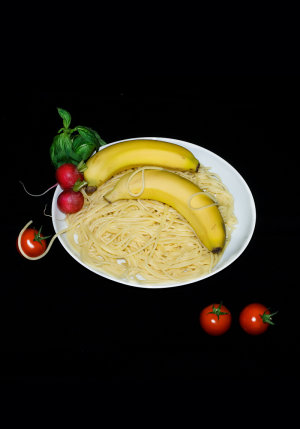 DDA: We live in the culture of images. The photograph has a key role, however, is profoundly debased, like everything around us, reduced to the role of disposable. The potential of the image are used to create a background noise in communication frankly deafening, with the result of generating the absence of communication. Paradoxically, the excess of visual communication of poor quality leads to gradual decay and barbarism of the ability to "read" an image for most people. Images often contain important messages that are almost always buried by the rubbish that surrounds them and by mental neglect of people. Photography, but all art in general, need today a new cultural renaissance, which has as its primary objective to maximize the ability of people to read and observe and not only see, to listen, and not just hear, to dialogue and not just talk, to share knowledge and not just to store information passively. The role of art and culture, including photography, is that too.
DDA: We live in the culture of images. The photograph has a key role, however, is profoundly debased, like everything around us, reduced to the role of disposable. The potential of the image are used to create a background noise in communication frankly deafening, with the result of generating the absence of communication. Paradoxically, the excess of visual communication of poor quality leads to gradual decay and barbarism of the ability to "read" an image for most people. Images often contain important messages that are almost always buried by the rubbish that surrounds them and by mental neglect of people. Photography, but all art in general, need today a new cultural renaissance, which has as its primary objective to maximize the ability of people to read and observe and not only see, to listen, and not just hear, to dialogue and not just talk, to share knowledge and not just to store information passively. The role of art and culture, including photography, is that too.
AB: What is your dream project?
DDA: Some people, throughout history, said: “There is always a dream behind each enterprise, but if the dream persists one day it becomes reality”. It's a phrase I really love, because I recognise it in full. I have many dreams, and I know that some may become viable projects as many of my dreams have become true in the past. One of my old dreams partially realised somehow, is to create a kind of artistic and cultural hub, to use a definition of fashion today, where artists and intellectuals can meet and produce art and culture and where people can meet, to use it without expressive, social or other limits, without intermediaries, with the possibility of an exchange of roles. This is a place not associated with a single territory, where those who enjoy the arts could also propose their own art: the perfect bridge between people.
AB: Professionally, what’s your goal?
DDA: I don’t have any special goal to reach. After many years I realise that I am still on the path of maturing personally, which started who knows when and will take me who knows where. This consciousness seems already a great output to me, one that goes beyond the average of what people expect. I believe that creating art is the best mode to follow this road in a conscious manner. If I should think about something useful, I would like that what I’m doing could be of use beyond my presence, leaving a trace with other people on their own roads.
Recently, when coming across the work of Mundus maris, the concepts and projects appealed to me. I can also relate to the people driving activities forward. They helped me becoming more aware about the sea and the threats we pose to life in and around the sea. This is why we are now working on a science-cum-art photography exhibition on the sea inspired by pacman, the early computer game. My art will help visitors to approach scientific understanding in novel ways. We hope that it will be a dream coming true soon.
AB: Daniele, thanks for sharing your thoughts and projects.








